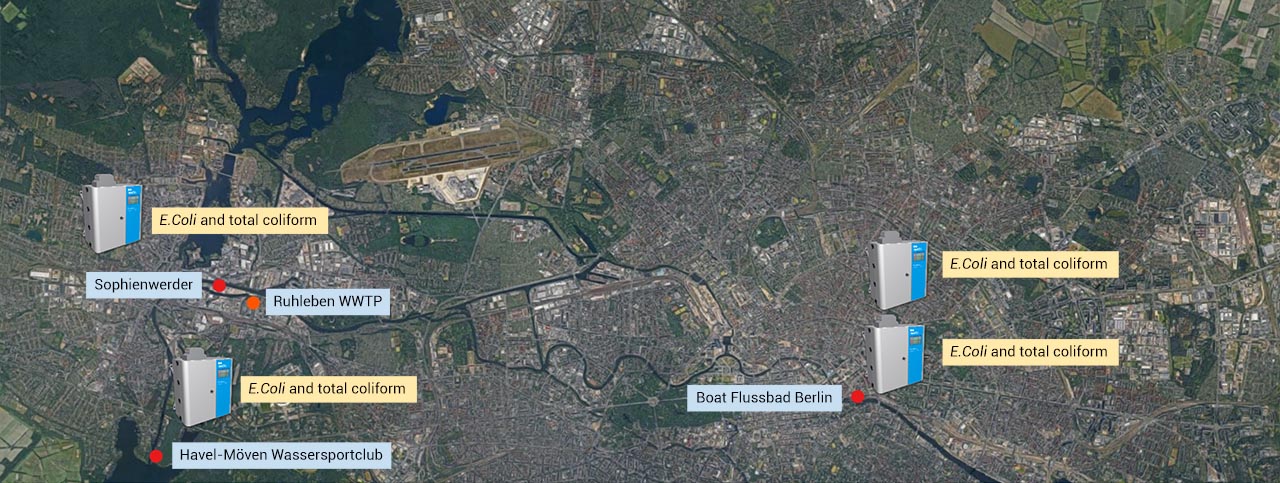Home / Inici » Pilot cities »
Berlin
In Berlin only online pathogenic monitoring, the dispersion modeling of pollutants and KDSS will be applied. The control of the waste water infrastructure in Berlin will be off-line.
The territorial context
The city of Berlin is situated in the north – east of Germany. In 2018, the city counted approx. 3.75 million registered inhabitants on an area of 892 km². The elevation ranges between 34–122 m. The annual average precipitation is 580 mm/a. Surface waters cover approximately 60 km² of the city’s area. A Berlin particularity is that the local rivers Spree and Havel show extreme periodic widenings, in such a way that they show alternating river and lake like characteristics. At these locations bathing and other recreational activities were, are and become increasingly popular.
The urban water-cycle’s management
Berlin’s publicly owned company Berliner Wasserbetriebe (BWB) carries out centralised management of the various areas of the city’s water cycle, such as wastewater treatment sewerage system and drainage network and ground water management.
The Berlin water system is often described as a partially closed water cycle since surface water, which serves as a recipient for treated wastewater is partially used for groundwater recharge and bank filtration for augmenting drinking water resources. Therefore, an integrated management of urban drainage, wastewater treatment and drinking water production is an inevitable component of the city’s water supply.
In average years, discharges from CSO of the combined sewer system happen between 20 and 30 times per year, potentially affecting some of Berlin’s 29 bathing locations. The Berlin Health authorities (LAGeSo) are responsible for bathing water management. Health authorities are informed by BWB about CSO events by water level sensors at Berlin main pumping stations. Since 2018, a new prediction model developed at KWB supports the Berlin health authorities by providing daily prediction about the expected bathing water quality at Berlin’s most vulnerable bathing waters. Measures to reduce the number of CSO include disconnecting impervious areas from the combined system, activating and construction of additional storage capacities in the combined sewer network and next to the existing WWTPs as well as optimizing control strategies.


